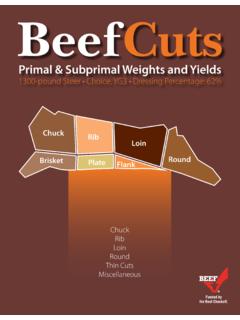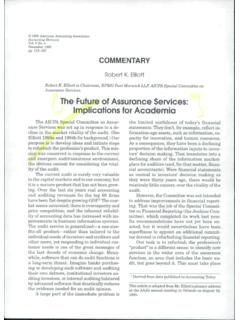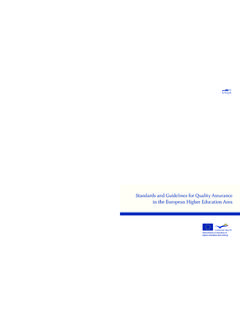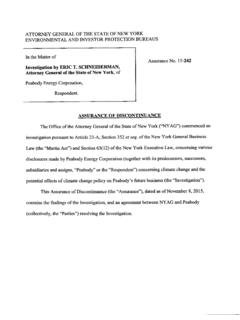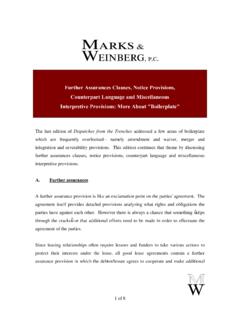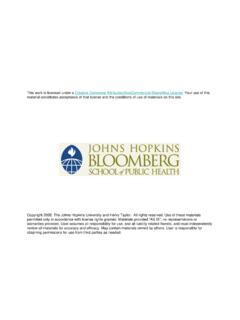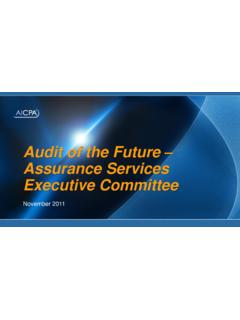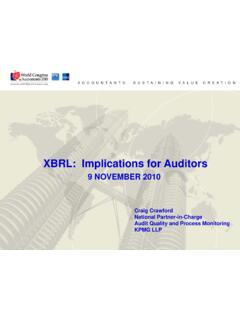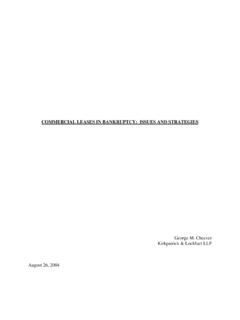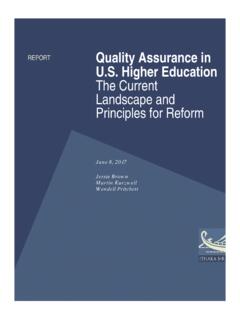Transcription of Beef Quality Assurance: Present and Future
1 beef Quality assurance : Present and Future By Barry H. Dunn, Executive Director King Ranch Institute for Ranch Management A review of the beef Quality assurance Program for the Joint Evaluation Advisory Committee July 10, 2006. Mid Year Meeting of CBB and NCBA. Reno, NV. 2. Introduction The purpose of this paper is to review the current status of the check-off funded beef Quality assurance (BQA) program in the beef industry of the United States of America, its strengths and weaknesses, and to summarize possible directions it might take in the Future . The opinions and positions are those of the author, as influenced by the individuals and organizations interviewed, material and information researched and reviewed, and his personal experiences. It is not an evaluation of past programs. The author has been in the cattle business his entire thirty-one year career, and has participated in all phases of cattle production.
2 He has served the industry in education, the promotion of the beef industry in various membership and leadership capacities including state cattlemen's organizations, two terms on a state beef council, and in national beef organizations. Methodology In the preparation of this review, qualitative research techniques were used to gather and interpret information. The five major sources of information were: 1. Personal Interviews 2. Web search for resources, programs, and material 3. Review of materials and programs 4. Records and information from The Cattlemen's beef Board 5. Comments and opinions gleaned from conversations and meetings The perspective taken by the author was one of an interested party who had some working knowledge of the program, but did not know the intricate details of the history, or current operational status of the BQA program. Present Status and Future Direction General Description In 2006, BQA is a loose knit coalition of the Cattlemen's beef Board (CBB), National Cattlemen's beef Association (NCBA), state beef councils, state cattlemen's organizations, industry partners, state and county Cooperative Extension Service (CES).
3 Personnel from across the country, state and federal regulators, and individual veterinarians, cattle feeders, and ranchers. Funding from The beef Checkoff Program, provided by the Cattlemen's beef Board and state beef councils, has been the major catalyst for what has evolved into an industry wide program. It is largely an educational program directed toward the production side of the beef industry to improve consumer confidence. Its focus is on the correct use of animal health products, feed additives and supplements, prevention of disease, and the proper care and handling of livestock. Projects and educational activity involving live cattle are authorized by the Act and Order provided the objective of the project is to clearly enhance the Quality , safety, and consumer acceptability of beef and beef products. According to NCBA staff, there is currently BQA programming activity in all 50 states and for the production systems of 3.
4 beef , dairy, and veal. Recommendations from BQA informational material and training fall into the broad categories of record keeping, management, product and animal handling and care, and sampling. There are certification processes available in some states and in some industry segments. There are no verification or audit processes in place relating to BQA practices actually being used by cattlemen in the production of beef . Perhaps the hallmark of the program is the adherence by all participants to the guiding principle that sound science will be the foundation of educational efforts to improve beef cattle production in terms of providing a high Quality product to consumers. The topic areas generally covered in BQA training and educational programs are: 1. Feedstuffs & sources 2. Feed additives & medications 3. Animal health treatments & injections 4. Record keeping 5. Animal care and husbandry practices 6.
5 Carcass Quality Scope Due to its organizational structure, the BQA program has the ability to reach into every corner of the United States beef production system and touch a very high percentage of industry participants. It has evolved over the last twenty-five years from concern about residues to a comprehensive discussion concerning all aspects of beef production across all segments of the industry. The program was formalized in 1991 with the use of dollars from The beef Checkoff Program. During this long period of time, the focus of the program has appropriately remained the health and well being of the consumer and the responsibility of the producer. Segments of the industry 1. beef 2. Dairy 3. Veal 4. Fed 5. Non-fed The author found it very difficult to actually measure BQA's scope and penetration into all segments of the industry. There are anecdotal reports on the number of trainings, meetings, publications, and certifications, but a centralized reporting system or information database does not exist.
6 Several of the states where BQA is very active can provide estimates, but many states can not. In the interviews conducted, positive results reported in the National beef Quality Audit-2000 concerning injection site lesions were almost always cited as evidence of the program's activity and success. In the same conversations, serious problems reported in the National Market Cow and Bull beef Quality Audit-1999 concerning BQA issues were not mentioned. Other measures of activity and scope could be dollars spent on BQA programs and activity or full time employees (FTE) dedicated to the program. However accessing these figures was very difficult. In most states, the program has been institutionalized into the land grant 4. university system, the state beef councils, or cattlemen's organizations to such a degree that it is impossible to measure the amount of money spent or people dedicated to the effort.
7 Although the author did not contact representatives from every land grant university, everyone that he did mentioned that BQA was taught in their beef Production classes in the Animal Science Curriculum. Additionally, many people mentioned that BQA is taught in the curriculums of technical schools, other colleges and universities offering Animal Science courses, 4-H programs, and in vocational agriculture classes in high schools. Again, accurate numbers of trainings, people trained, or certifications in BQA from most states or the nation do not exist. In conversations with representatives of several large ranches, BQA has been incorporated into their employee training and ranch protocol. The feedlot industry has been very active in promoting the program and incorporating its methods and principles. Several interviewees expressed concern about the level of participation within the dairy segment of the beef industry.
8 Additionally, web-based training is available from several states. But it is difficult to accurately determine the total number people trained or certified, within states or segments of the industry. New efforts in BQA that expand its scope and effectiveness would include making material available in Spanish, additional web based resources, and delivery to a wider range of audiences. These would include people of younger ages, different sizes and types of operations, and to non-traditional audiences like truck drivers. In summary, judging from conversations and website announcements, the author is under the impression that a great deal of activity concerning BQA goes on each year and is planned for 2006 and beyond. That would be hundreds, perhaps thousands, of meetings and classes across the nation reaching thousands of individuals. However, at this point in time, there is no methodology in place to accurately gauge the actual scope of the program.
9 Participation The BQA program is usually delivered by or in collaboration between the following organizations: 1. Cooperative Extension Services 2. State beef councils 3. State or local cattlemen's organizations 4. Veterinarians 5. Sale barns 6. Feedlots 7. Ranches 8. Universities and colleges 9. High School vocational programs 10. 4-H clubs 5. Traditional target audiences have included: 1. Feedlot owners and workers 2. Ranchers and ranch hands 3. Farmers who own cattle and their workers 4. Owners and employees of dairies 5. Veal operations 6. Students Future audiences may be expanded to include truck drivers, hobby type owner operators and targeted groups participating in coordinated marketing programs. Activity The primary activity of the BQA program centers around general education of people involved in the production processes of beef and beef products. These activities include the publication and distribution of educational materials, hosting meetings and trainings, and in several states, certification and re-certification.
10 There is BQA activity in all fifty states. At any given time, one can find BQA activity going on somewhere. Much of the training centers around times of key production activity, however meetings and trainings are held during all months of the year. Cost and Expenditures The Cattlemen's beef Board annual expenditures on BQA since 2003 are: Year BQA Budget Actual Expenses 2003 $600,000 $511,182. 2004 $457,000 $256,066. 2005 $363,000 $308,047. 2006 $209,000 $ 14,160 (as of 4-30-06). One of the BQA's greatest successes is that to a large extent, its activities have been absorbed and institutionalized into the programs of its participating organizations at the local, state, and national level. No identifiable processes could be identified to accumulate a record of the expenditures made on the program within states, across states, or between or within organizations. As a result, at this point in time there is no way to estimate the total dollars expended on the program for a year, period, state, region, across the nation, or by organization.
